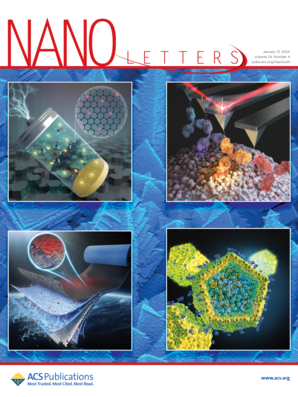A Solvent-Induced Solid Polymer Electrolyte with Controllable Polymerization for Low-Temperature Lithium Metal Batteries
IF 9.6
1区 材料科学
Q1 CHEMISTRY, MULTIDISCIPLINARY
引用次数: 0
Abstract
Solid-state electrolytes based on in situ ring-opening polymerization of 1,3-dioxolane (DOL) have attracted widespread attention in Li metal batteries because of their high interface compatibility. However, its conventional cationic polymerization mechanism frequently results in the formation of long polymer chains during in situ polymerization, thereby impeding Li+ transport. Here, we regulate the ring opening polymerization of DOL by introducing N,N-dimethyltrifluoroacetamide (FDMA), thus avoiding the formation of long polymer chains. Meanwhile, FDMA can derive a stable SEI rich in LiF during electrochemical cycling, improving interface stability and suppressing dendritic Li growth. Therefore, the full battery with LiFePO4 as the cathode can achieve a high capacity retention rate of 83.9% after 400 cycles at a rate of 5.0 C. At −20 °C, the Li∥LiFePO4 full battery can provide a high capacity of 137 mAh g–1. The solvent-induced strategy provides a promising new avenue for designing a solid electrolyte with high temperature resistance.

低温锂金属电池用可控聚合的溶剂诱导固体聚合物电解质
基于1,3-二氧杂环烷(DOL)原位开环聚合的固态电解质因其良好的界面相容性在锂金属电池中引起了广泛的关注。然而,其传统的阳离子聚合机制往往导致原位聚合过程中形成长聚合物链,从而阻碍了Li+的运输。本文通过引入N,N-二甲基三氟乙酰胺(FDMA)调控DOL的开环聚合,从而避免了长聚合物链的形成。同时,FDMA可以在电化学循环过程中产生稳定的富含LiF的SEI,提高界面稳定性,抑制枝晶Li生长。因此,以LiFePO4为阴极的全电池在5.0 C的倍率下,经过400次循环后,容量保持率高达83.9%,在−20℃时,Li∥LiFePO4全电池可提供137 mAh g-1的高容量。溶剂诱导策略为设计耐高温固体电解质提供了一条有前途的新途径。
本文章由计算机程序翻译,如有差异,请以英文原文为准。
求助全文
约1分钟内获得全文
求助全文
来源期刊

Nano Letters
工程技术-材料科学:综合
CiteScore
16.80
自引率
2.80%
发文量
1182
审稿时长
1.4 months
期刊介绍:
Nano Letters serves as a dynamic platform for promptly disseminating original results in fundamental, applied, and emerging research across all facets of nanoscience and nanotechnology. A pivotal criterion for inclusion within Nano Letters is the convergence of at least two different areas or disciplines, ensuring a rich interdisciplinary scope. The journal is dedicated to fostering exploration in diverse areas, including:
- Experimental and theoretical findings on physical, chemical, and biological phenomena at the nanoscale
- Synthesis, characterization, and processing of organic, inorganic, polymer, and hybrid nanomaterials through physical, chemical, and biological methodologies
- Modeling and simulation of synthetic, assembly, and interaction processes
- Realization of integrated nanostructures and nano-engineered devices exhibiting advanced performance
- Applications of nanoscale materials in living and environmental systems
Nano Letters is committed to advancing and showcasing groundbreaking research that intersects various domains, fostering innovation and collaboration in the ever-evolving field of nanoscience and nanotechnology.
 求助内容:
求助内容: 应助结果提醒方式:
应助结果提醒方式:


